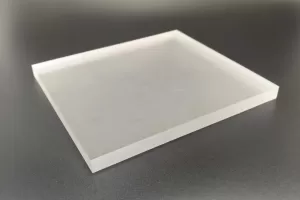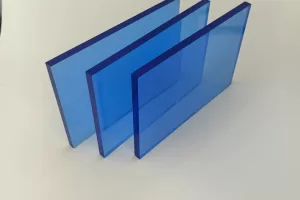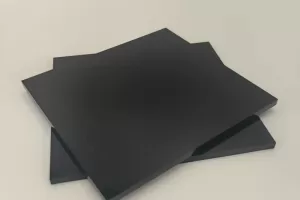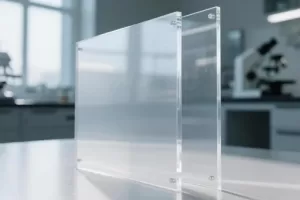+86 180 1040 9086
- Inicio
- Productos
- Acrílico
- Lámina acrílica
- Lámina acrílica transparente
- Lámina acrílica de color
- Lámina acrílica sanitaria (bañera)
- Espejo acrílico
- Espejo acrílico
- Lámina acrílica para acuarios
- Lámina acrílica Day&Night
- Plancha acrílica ignífuga
- Placa acrílica mate/esmerilada
- Hoja acrílica de purpurina/tejido
- Acrílico resistente a los impactos
- Filtro infrarrojo acrílico
- Lámina acrílica LGP
- Lámina acrílica antirruido
- Lámina acrílica para ventanas de vehículos recreativos
- Chapa acrílica de señalización
- Valla insonorizante
- Lámina acrílica especial gruesa
- Acrílico transmisor de UV
- Tubo y varilla acrílicos
- Productos acrílicos
- Lámina acrílica
- PVC
- Acrílico
- Quiénes somos
- Solución
- Blogs
- Contáctenos
DETALLES DEL BLOG
¿Cómo elegir la lámina acrílica sanitaria más perfecta para la decoración de su cuarto de baño?
When planning a bathroom renovation, it is very important to choose suitable materials to realize the integration of aesthetics, durability and functionality. Among the main competitors of bathtubs, shower walls and partitions, sanitary acrylic sheet are used. This special material revolutionized the design of modern bathroom. But what is it and why is it considered as a superior choice? This comprehensive guide will delve into everything you need to know about sanitary acrylic sheet and waterproof acrylic sheet , helping you make an informed decision for your next project.

What is the sanitary acrylic sheet? One definition
A sanitary acrylic sheet is a high-performance polymer sheet specifically engineered for use in humid and wet environments like bathrooms and kitchens. It is made of acrylic acid (PMMA-polymethylmethacrylate) and other composite materials, forming a non-porous solid surface. The term waterproof acrylic sheet is often used interchangeably, which highlights its core feature of being completely waterproof. Different from natural materials such as stone or wood, it does not absorb water, preventing the growth of mold, mold and bacteria, and makes it extraordinarily hygienic.
Why choose acrylic plate instead of traditional materials? The benefits are huge:
1. Excellent hygiene and easy maintenance: the non-porous surface of waterproof acrylic sheet means that it will not breed bacteria. Cleaning is simple-just wiping it with a mild soap and water solution is enough to make it look brand-new. This is a significant advantage over grouted tiles, because molds can grow in the joints.
2.Superior Durability and Impact Resistance: With an anti-impact strength that is 10 times greater than that of ordinary glass (based on standard industry impact tests), these sheets are highly resistant to chipping and cracking. This makes them a safe choice for family residence.
3. Aesthetic versatility and seamless design: sanitary acrylic sheet can be made into various colors, patterns and finishes, including high gloss, dull, and even stone-like textures. They can be thermoformed into seamless sculptural shapes, allowing the creation of integrated sinks, bathtubs and continuous shower rooms without unsightly seams.
4. Lightweight and easy installation: Although its strength is high, acrylic acid is relatively light compared with heavy cast iron or slate, thus simplifying the logistics and installation process.
5. Excellent light transmittance: the light transmittance is as high as 92% (a standard attribute of high-purity PMMA), which can make smaller bathrooms feel brighter and more spacious, especially in shower rooms.
Major technical specifications and performance data
In order to ensure quality, it is very important to understand the technical standards. High-quality sanitary acrylic sheet should meet the following specifications (in line with industry standards of bathroom acrylic).
· Optical transmittance: 92%
· Density: 1.19g/cm.
· Heat Resistance (Long-Term Use): -40 ° c to 90 °.
· Anti-yellowing Grade: outdoor weather resistance grade, ensuring long-term color stability.
· Thickness Tolerance: 0.1 mm (to ensure manufacturing consistency).
· Maximum Available Size: Up to 3000 mm x 9000 mm, allowing for large, seamless installations.
(Source: General industry standard for casting PMMA sheets issued by ASTM International and other organizations).
Primary Applications: Where is Sanitary Acrylic Sheet Used?
As the name implies, this material is mainly used for sanitary environment.
· Bathtub lining and bathtub: It can be thermoformed into complex shapes, making it ideal choice for modern, independent and built-in bathtubs.
· Shower wall and partition wall: create a smooth and easy-to-clean shower fence, which is less prone to water leakage than traditional ceramic tile walls.
· Vanity Tops and Integrated Basins: Offering a seamless and stylish look for bathroom counters.
· Wall coating: used as a whole wallboard, creating a minimalist modern aesthetic feeling without mortar lines.
Frequently asked Questions and answers
Q: What is the difference between sanitary acrylic board and glass fiber used in bathtub?
A: Although both are options, sanitary acrylic sheet is usually considered as a high-quality choice. It is more durable, has higher gloss, deeper finish and is more resistant to chipping and cracking. Glass fiber can be more flexible, but over time, it is easy to fade and bruise.
Q: Can I repair a deep scratch of acrylic board?
A: Yes, minor to moderate scratches (0.3mm deepest) can usually be repaired. Standard methods involve the use of special polishing compound. For example, a polishing agent such as AC-Polish 03 can be polished with a soft wool polishing wheel at a speed of about 800 revolutions per minute to gradually repair the surface. Further damage may require professional filling and polishing.
Q: Is it safe to use abrasive cleaning agent on a waterproof acrylic board?
A: No. Avoid using polishing pads, cleaning powder or irritating chemicals such as nail polish remover. These can scratch or darken the high gloss surface. Adhere to the use of soft cloths and non-abrasive and neutral detergent.
Q: What is the minimum bending radius for a 5-mm thick thin plate?
A: In order to avoid stress whitening (white spots at bends), the minimum bending radius should be at least three times the thickness of the plate. For a 5 mm plates, this means that the radius is not less than 15 mm. Thermoforming process is always used, and it is controlled to heat evenly to about 110.
Categorías de puestos
Categorías de productos
- Acrílico 20
- Lámina acrílica 18
- Lámina acrílica transparente 1
- Lámina acrílica de color 1
- Sanitario(Bañera Lámina acrílica 1
- Espejo acrílico 1
- Lámina acrílica para acuarios 1
- Lámina acrílica Day&Night 1
- Plancha acrílica ignífuga 1
- Placa acrílica mate/esmerilada 1
- Hoja acrílica de purpurina/tejido 1
- Acrílico resistente a los impactos 1
- Filtro infrarrojo acrílico 1
- Lámina acrílica LGP 1
- Lámina acrílica antirruido 1
- Lámina acrílica para ventanas de vehículos recreativos 1
- Chapa acrílica de señalización 1
- Valla insonorizante 1
- Lámina acrílica especial gruesa 1
- Acrílico transmisor de UV 1
- Tubo y varilla acrílicos 2
- Productos acrílicos 0
- Lámina acrílica 18
- PVC 2




